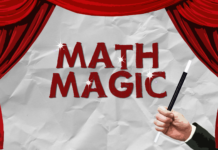Formula for finding out Permutation And Combination
Useful Relations
(ii). nC0=n!0!×n!=10!=1
(iii). n!=n×(n−1)!
(iv). nPr=n!(n−r)!
(v). (n+1).nPr=n+1Pr+1
(vi). nCr=nPrr!
(vii). nCr=nCn−r
(viii). n−1Cr−1+n−1Cr=nCr
1. Factorial Notation: Let n be a positive integer. Then, factorial n, denoted n! is defined as: n! = n(n – 1)(n – 2) … 3.2.1.
2. Permutations: The different arrangements of a given number of things by taking some or all at a time, are called permutations
3. Number of Permutations Number of all permutations of n things, taken r at a time, is given by: nPr = n(n – 1)(n – 2) … (n – r + 1) = n!/(n – r)!
4. An Important Result: If there are n subjects of which p1 are alike of one kind; p2 are alike of another kind;p3 are alike of third kind and so on and pr are alike of rth kind, such that (p1 + p2 + … pr) = n. Then, number of permutations of these n objects is = n!/(p1!).(p2)!…..(pr!)
5. Combinations: Each of the different groups or selections which can be formed by taking some or all of a number of objects is called a combination. Then, number of permutations of these n objects is = n!/(p1!).(p2)!…..(pr!) Examples: 1. Suppose we want to select two out of three boys A, B, C. Then, possible selections are AB, BC and CA. Note: AB and BA represent the same selection. 2. All the combinations formed by a, b, c taking ab, bc, ca. 3. The only combination that can be formed of three letters a, b, c taken all at a time is abc. 4. Various groups of 2 out of four persons A, B, C, D are: AB, AC, AD, BC, BD, CD. 5. Note that ab ba are two different permutations but they represent the same combination. Number of Combinations: The number of all combinations of n things, taken r at a time is: nCr = n!/(r!)(n – r)! = n(n – 1)(n – 2) … to r factors / r! .
6. 1) Permutation = nPr = n! / (n-r)! 2) Combination = nCr = nPr / r! where, n, r are non negative integers and r<=n. r is the size of each permutation. n is the size of the set from which elements are permuted. !is the factorial operator.













